Bonjour,
J’utilise beaucoup d’outils…
De nouveaux articles en lien avec la sculpture sont en préparation, ils devraient pouvoir répondre à ces questions 😉
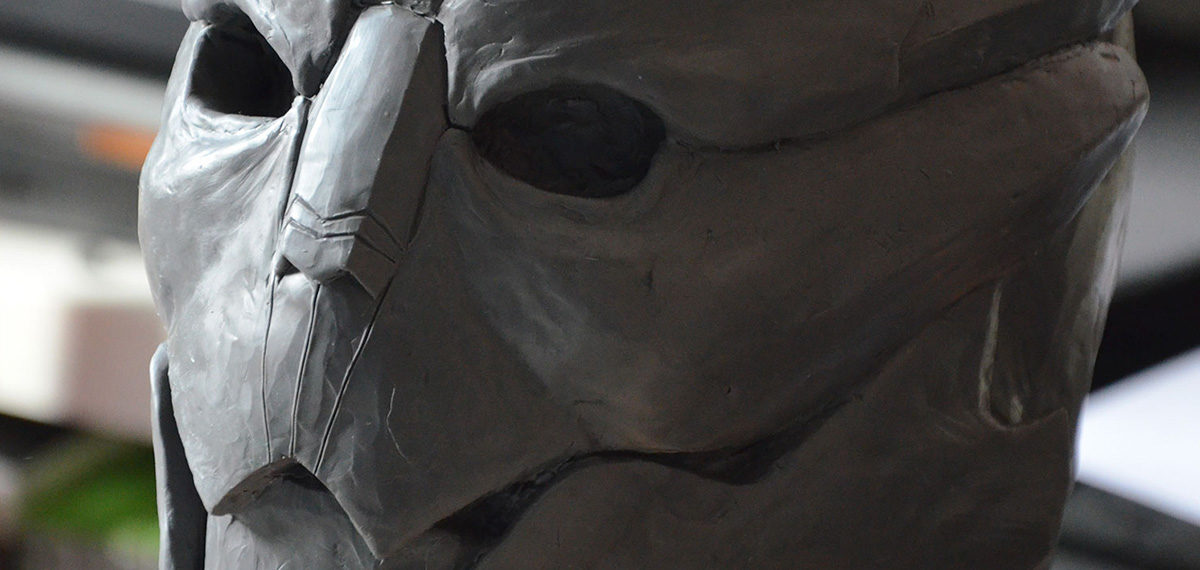
Material: Plastiline
Materials and tools used :
Amazon affiliate links[27/02/20 EDIT :] Even if we still use Plastiline for complex mold making, we now prefer the Monster Clay for all that relates to sculpting.
Important note: Plastiline is mainly sold in France and can be hard to find out of Europe. If you live outside Europe, you may prefer ordering another oil based sculpting medium, called Monster Clay.
Plastiline is a material that became essential to us when making our cosplays. We use it in different cases:
What is Plastiline ?
Plastiline is an entirely re-usable modelling clay, as it never dries or hardens.
It melts differently according to the heating temperature.
You can use it solid (by warming it into your hands for example), softened (heated with a hair dryer) or even liquid (in a water bath). That being said, be careful if you heat it too much because it becomes sticky. You can easily burn your hands!
Financially speaking, it is an extremely efficient material to manufacture molds. It doesn’t stick to other materials like resins, plaster or alginate, and it is compatible with polycondensation elastomers (molding silicones). It also avoids the use of extra releasing agents (such as Vaseline grease or else).
It is almost infinitely re-usable, because it doesn’t dry. Impurities may stick to Plastiline. In that case, just heat it up in a water bath and sieve it to make it clean.
Plastiline® is a trademark (I advise you against buying a cheap brand because it won’t be the same product). Be sure not to confuse it with plasticine (with a ‘c’), it’s really not the same!
Different types of Plastiline:
Plastiline is available in different hardness, as you can see in the following table:
| Hardness | Melting point | Shore A* |
| 40 – Très souple | 39° – 41°C | 15 – 19 |
| 50 – Souple | 48° – 52°C | 28 – 32 |
| 55 – Standard | 52° – 56°C | 48 – 52 |
| 60 – Dure | 56° – 58°C | 58 – 62 |
| 70 – Très dure | 58° – 60°C | 65 – 75 |
*Shore A: measurement of an object’s insertion depth by indentation on a material. One of the most common scales of durometer is Shore A, which results in a value between 0 and 100, between soft and hard. (Thanks Wikipedia!)
If you don’t know what to choose, tell yourself that soft Plastiline may melt with the sun, but that hard Plastiline needs to be heated up before use… Also, tell yourself that on a huge piece or a high-detailed piece, soft Plastiline doesn’t hold up as well as the hard one, but it is easier to work with. It’s up to you to define what your priority is or to compromise on an intermediate Plastiline.
In our case, we use Plastiline 55 – Standard to make our models.
You also have the choice of the color as there are several existing: ivory, dark grey, Naples pink and red ochre.

Usage warning
Plastiline is non-toxic. There are even types that can be used in sweets modelling. However, you should be cautious if you plan on using it in a liquid state, as it becomes very hot and can cause severe burns. Because it sticks to your hands once hot, it can easily become a hassle to work with. We recommend you to have a bowl filled with cold water right next to you, to cool down the Plastiline so you can remove it quickly from your fingers. By the way, we never say it enough, but if you ever burn yourself, apply cold water on the burnt area.
Be mindful of the other materials you will use with Plastiline because some acids or solvents can deteriorate it. For example, sanitary silicone is sometimes used to harden molds made of molding silicon. If the piece you are making is made out of Plastiline, be careful not to use acetic sanitary silicon!
Some solvents like turpentine or white spirit can melt Plastiline as well. In small amounts they can be super useful to smoothen your Plastiline pieces, but if you put too much of them, they will ooze for a long time.
How to use Plastiline?
Depending on the hardness and what you’ll make of it, you can proceed with different approaches. If you want to work the plastiline solid, you can use your hands or sculpting tools (knives, chisel, trimmers, etc.)
You can use the plastiline in a dough-like state, by heating it with a hair-dryer (or with any other heating system) and then spread it with a spatula. It will be very hot, so make sure you read the usage warnings above before trying.
To use it in a liquid state, heat the plastiline in a water bath before pouring it. Then wait for it to cool down before unmolding.
You can use Plastiline to make all your molds, but I wouldn’t recommend to make one for big pieces. You can apply Plastiline on any material. By making the big, undetailed parts out of cardboard, metal wire or Pepakura and then applying Plastiline on top of it, you will use a lot less of it and you will have a better rigidity in the whole piece. It is also easier to keep the correct proportions this way.
See our Dragonpriest Staff article
Be careful if you’re using Plastiline on a smooth surface such as varnished wood, glass, oilcloth, etc. Plastiline tends to stick when you press on it. Once the Plastiline is stuck, it will be hard to remove the piece without breaking it.
To avoid this problem, you can either:
- Work Plastiline on a paper sheet (you can twist and fold it even if it is stuck), or on a cardboard (beware of varnished cardboard, Plastiline tends to stick to it too!).
I use this method, but it can be more difficult for you to work on the sculpture as your piece of Plastiline may also move across the surface of the sheet/cardboard.
OR you can:
- Shift your piece regularly to prevent it to stick too much (this method seems a bit impractical but at least the piece of Plastiline won’t move when you work on it).
See our article Amulet of Kynareth
How much does it cost?
Hehe, asking the real questions! 1kg of Plastiline is worth around 15€. However, the price goes down as you buy more of it, so 5kg of Plastiline is worth around 50€ (for reference, a 5kg tube is 42cm high and 10cm wide, so let’s just say it is a lot of Plastiline).
It is definitely more expensive than clay, plastiroc or other sculpting materials, but in the long run it will be more profitable because it is reusable. (Even if it pains us to melt our creations we worked so many hours on :P).
Materials and tools used :
Amazon affiliate linksComments (2)




 0 articles -
0 articles - 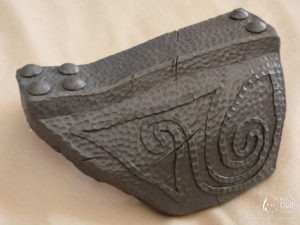
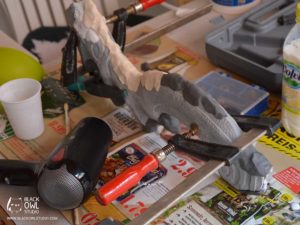
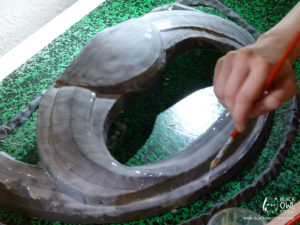
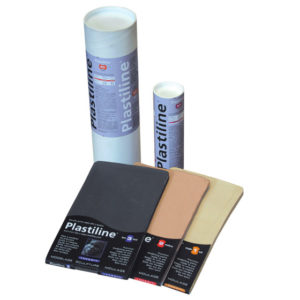
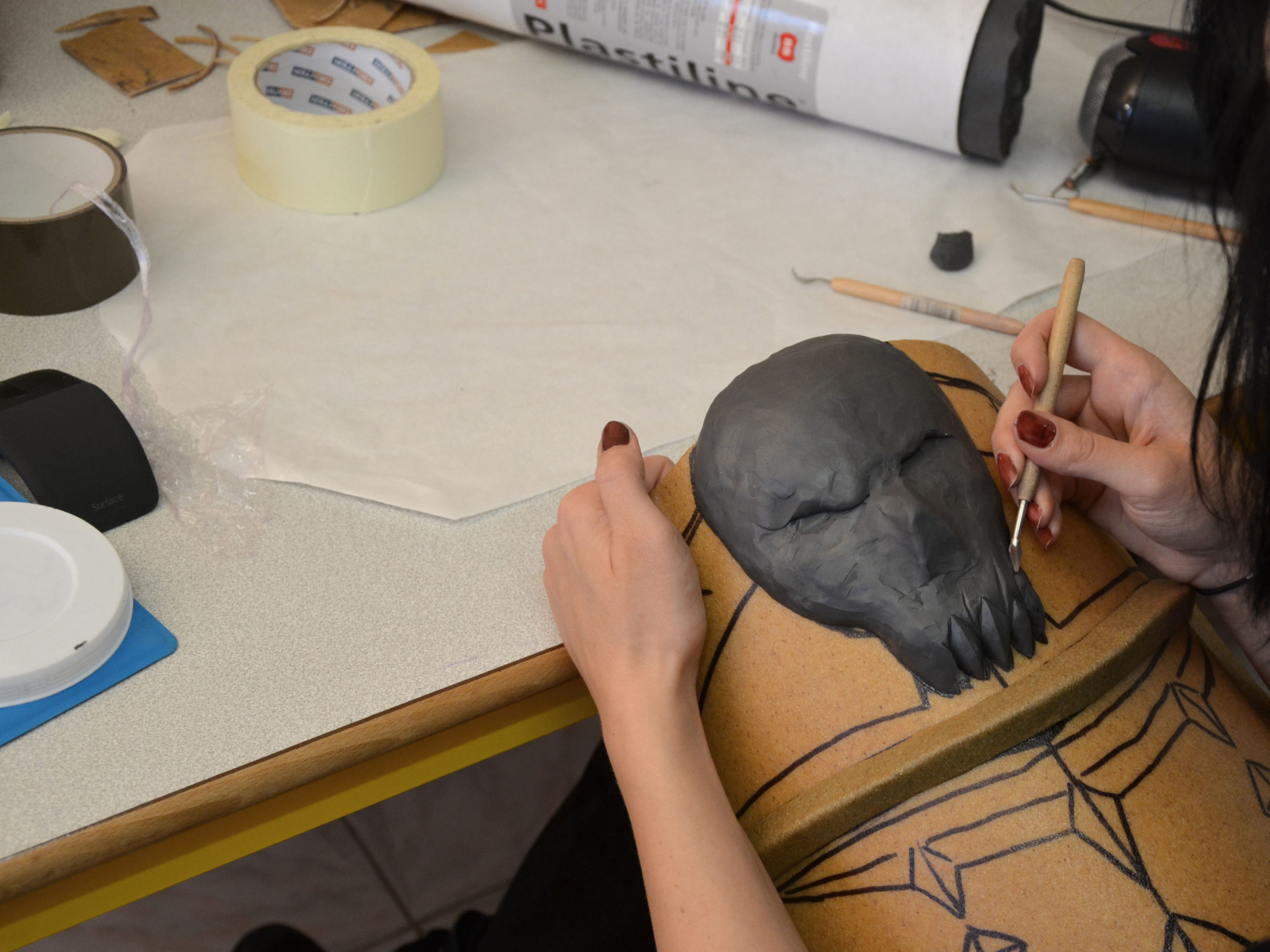
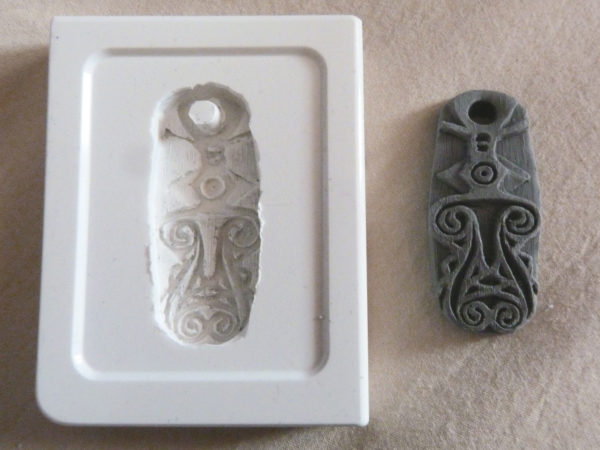
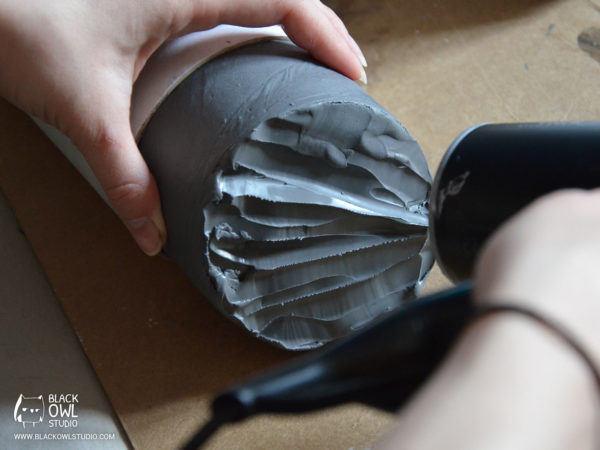
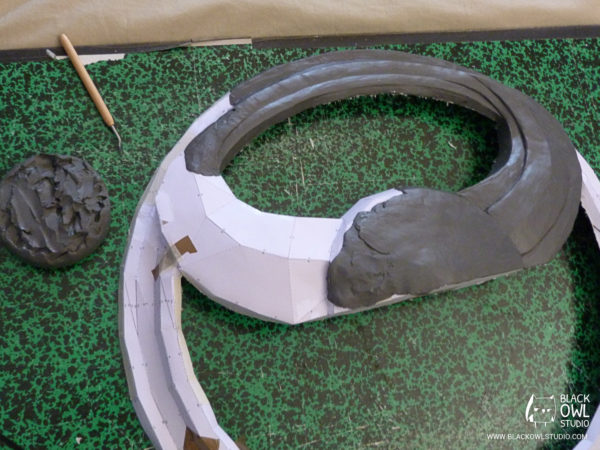
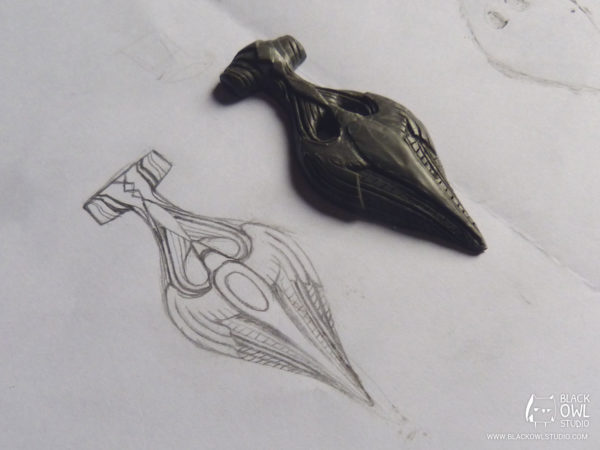
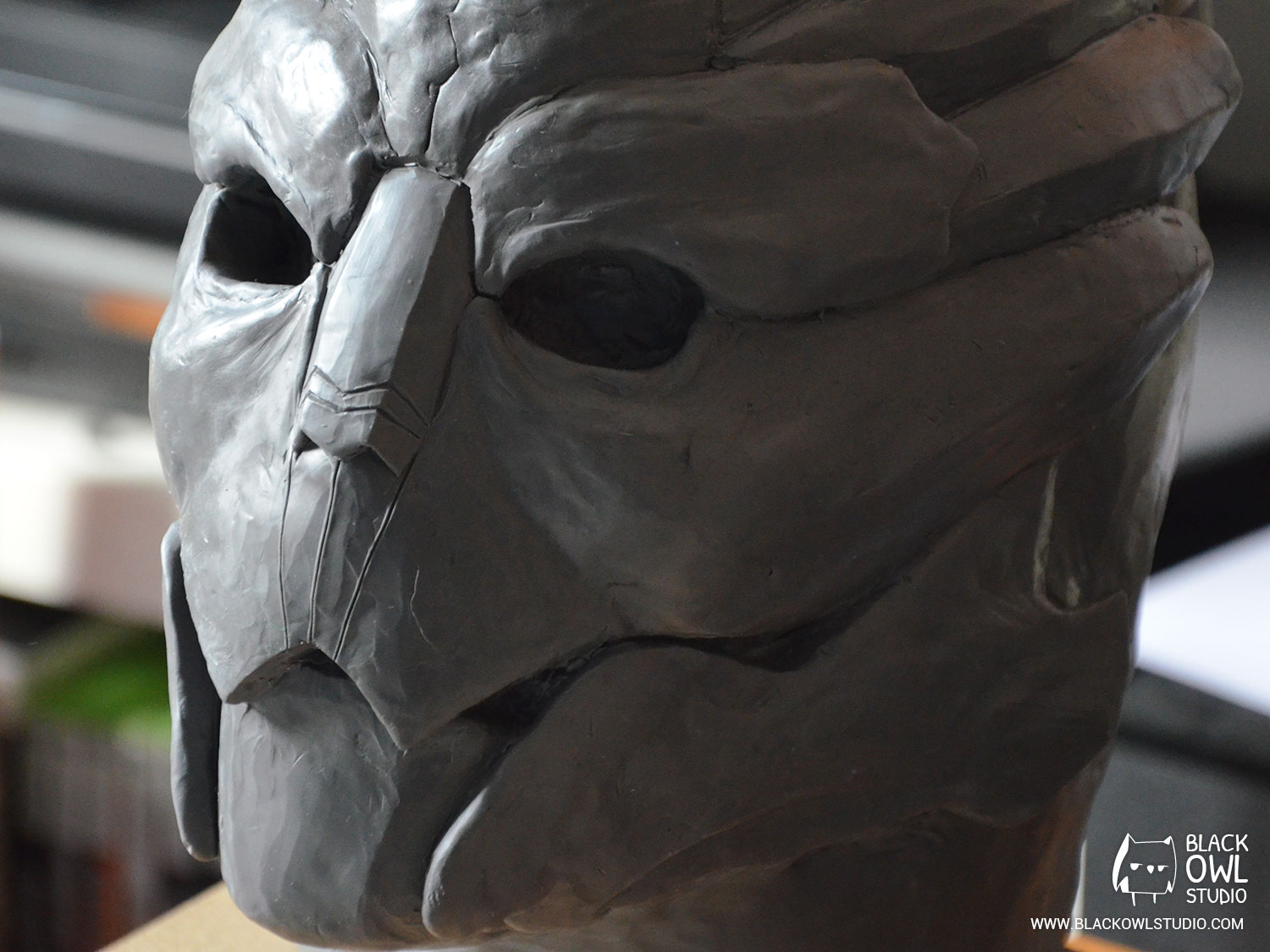
malaval jc
Bonjour,
À part des spatules boules quels sont les autres outils que tu utilises?
Et surtout des adresses pour les trouver.
Je suis fan de T. Burton aussi
À bientôt
#jc.Malaval